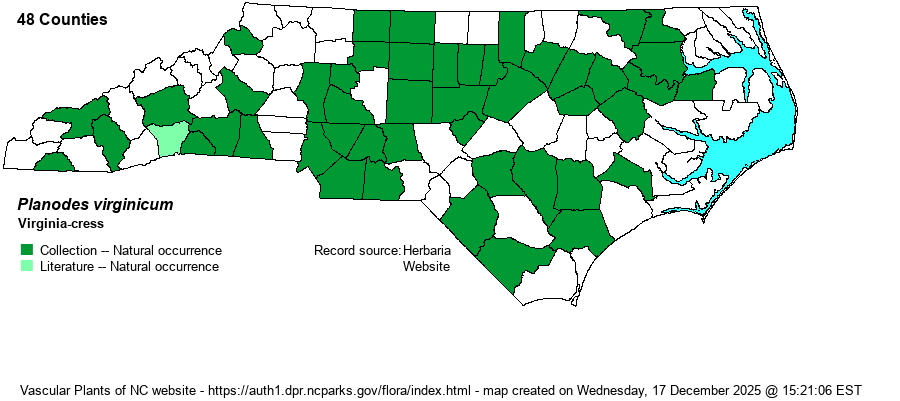| Author | (L.) Greene | |
| Distribution | Present across most of the state, but absent from the lower Coastal Plain, at least in the eastern portions, and from the Sandhills.
This is a Southern and Midwestern species, ranging from southern VA and KS, south to northern FL and central TX.
| |
| Abundance | Infrequent in the Piedmont, and western-central Coastal Plain. Rare to uncommon in the Mountains, and absent near most of the coast. However, as it is a ruderal "weed" of disturbed places, it could easily be overlooked by collectors and other biologists. | |
| Habitat | This is a ruderal species, but for some reason is not at all common or really numerous in the state. It grows in fields, roadsides, etc., though it has a preference for moist disturbed ground. | |
| Phenology | Blooms from February to June, and fruits soon after flowering. | |
| Identification | This is a small plant, very easily overlooked, and not overly well known to biologists. It is branched from the base, with branches ascending to decumbent, seldom more that 8 inches long or tall. The basal leaves are 2-3 inches long, highly pinnately segmented. The few stem leaves are also pinnately segmented. At the ends of branches are the racemes, some up to 4 inches long, of very small white flowers. Of most significance are siliques, each flat and narrow but up to 1-inch long, and fairly long for the short size of the plant. Thus, identify this plant by the basal rosette of highly pinnate leaves, and the narrow siliques on a relatively short stem. | |
| Taxonomic Comments | This species is quite different from just about any other species, and only one other species is included in Planodes. More recent references had it in Sibara, or also as Arabis virginica. Clearly, it is not similar to most other Arabis species.
| |
| Other Common Name(s) | Virginia-cress, Sibara, Virginia Rockcress, Virginia Winged Rockcress | |
| State Rank | S4 | |
| Global Rank | G5 | |
| State Status | | |
| US Status | | |
| USACE-agcp | FACU link |
| USACE-emp | UPL link |

